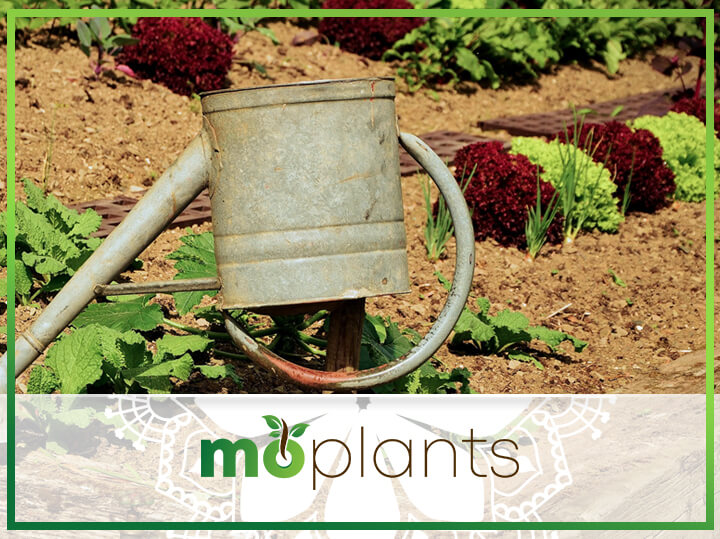Listen up, gardener. Choosing the best mulch for your herb garden doesn’t necessarily require shelling out a lot of cash.
Over the years, we found homemade mulches often make the most effective and cheapest alternative.
To help you get started, let’s go over the top mulch options for your vegetable garden!
Two Types of Mulch
Organic Mulch
Grass Clippings
Grass/lawn clippings are one of the best organic mulches because they’re packed with nitrogen.
Nitrogen-packed mulches help increase the acidity in the soil and as our fellow expert gardeners say, plants grow better in soil that’s highly acidic.
Dry the grass clippings first and spread them thinly as you create your mulch layer to prevent the sticky, slimy, and hot mess of over-mulching which harms your herb plants.
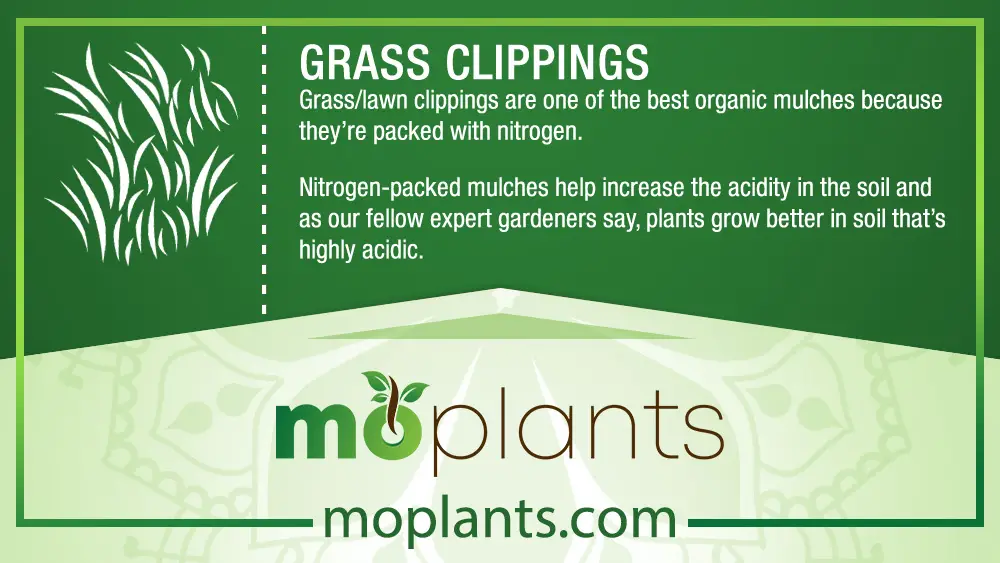
Leaves
Leaves are another reliable mulch material you can use to nourish and keep the soil well-fed. Additionally, leaves prevent soil erosion so what’s not to love?
Before using leaves as mulch, heed this advice first: don’t use leaf mulch that’s wet since it reduces moisture and oxygen in your garden soil.
One of the best gardener tips we can give as stated by experts in Michigan State University is to rake your leaves then run over your leaf mulch with a mower for better soil digestion.
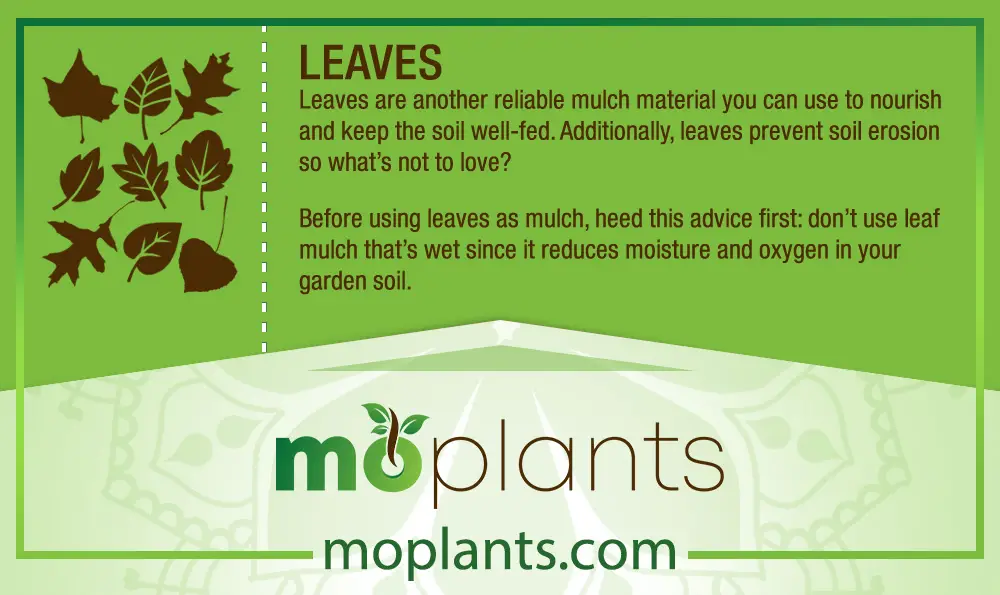
Compost
Most beginner gardeners rely on compost mainly because it’s cheap and widely popular.
Still, there’s a right way to use compost, and also, using too much compost isn’t advisable.
What’s great about compost is you can practically use anything around your home, even kitchen scraps.
It also breaks down rapidly to improve your soil conditions. Now, here comes the crucial part: you don’t treat compost the way you treat Sunday night’s leftovers.
A compost pile isn’t something as simple to apply as you would tree leaves. The reason being, compost like food scraps or coffee grounds take a few days to properly decompose.
Absent proper decomposition, you run the risk of introducing pathogens into your vegetable plants.
If you plan to use fruit scraps, wait for them to ripen. For other food scraps, wait a few days for them to decompose.
Here is how you can make compost at home and a compost recipe to try.
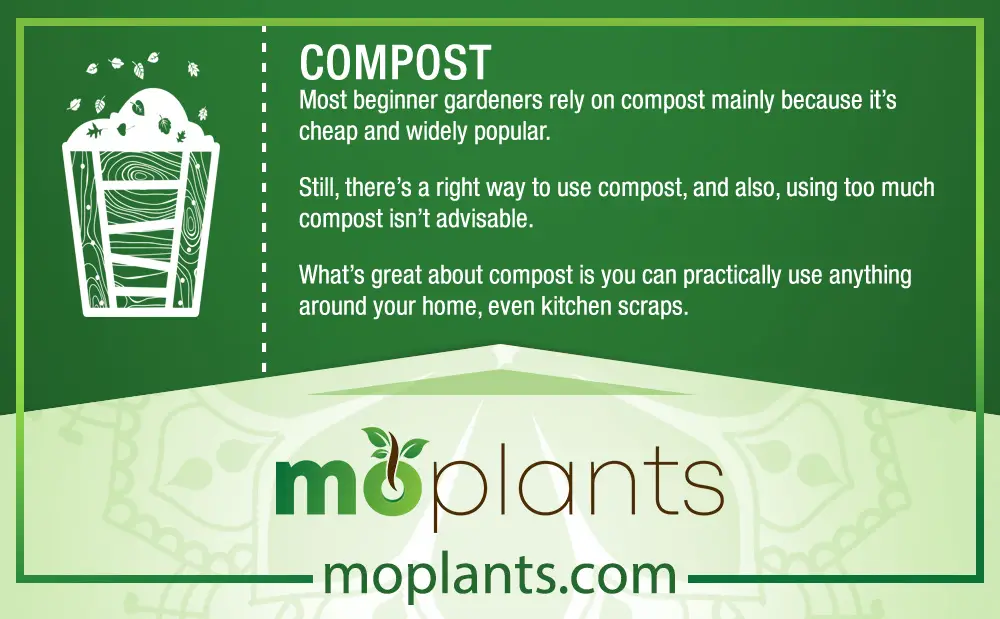
Wood Chips/Shredded Bark
Wood chips are some of the best organic mulches you can easily have access to during Spring tree pruning.
Just listen to what Horticulturist Linda Chalker-Scott has to say. This adds diversity to your soil and can even help protect your plants from disease.
Between softwood and hardwood bark though, we recommend choosing softwood bark.
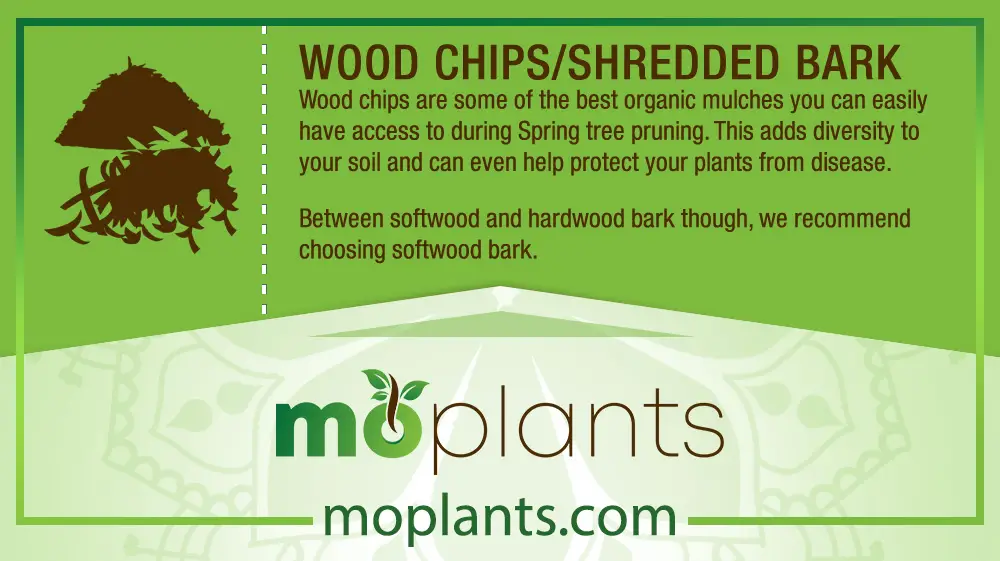
Pine Needles
Pine needles or pine straw breaks down slowly into the soil and isn’t as acidic either.
What’s great about pine straw is it’s a longer-lasting organic mulch perfect for perennial herbs like sage or lavender.
Alternatively, you can try cocoa bean hulls or pecan hulls as they’re also quite durable as mulch material and last longer than a single growing season.
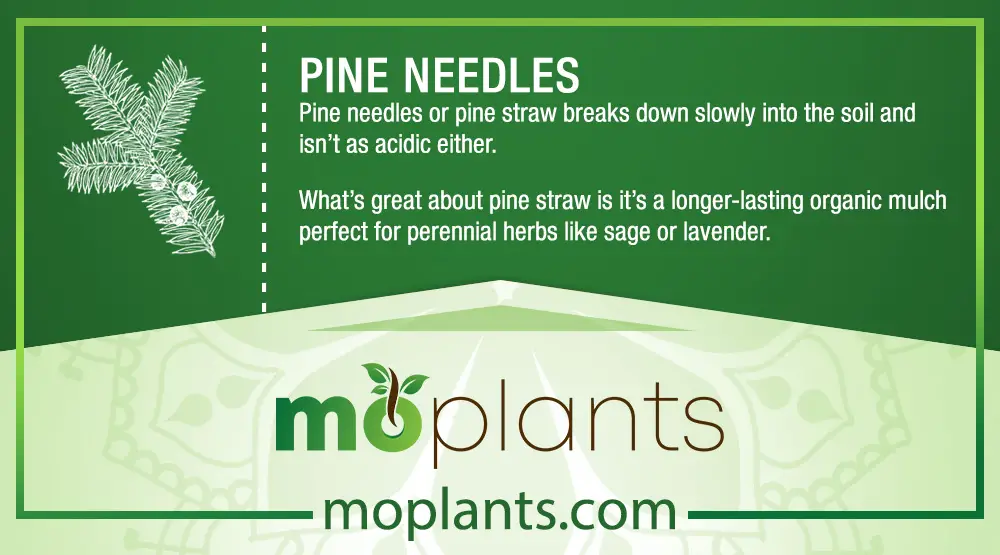
Shredded Paper & Cardboard
Using shredded paper & cardboard as mulch is as straightforward as layering it over your garden.
After all, cardboard and paper still come from a natural source – trees.
It’s even possible to layer cardboard with various organic mulches like leaves, compost, and grass clippings to serve as soil for a new garden bed or any flower beds you may have.
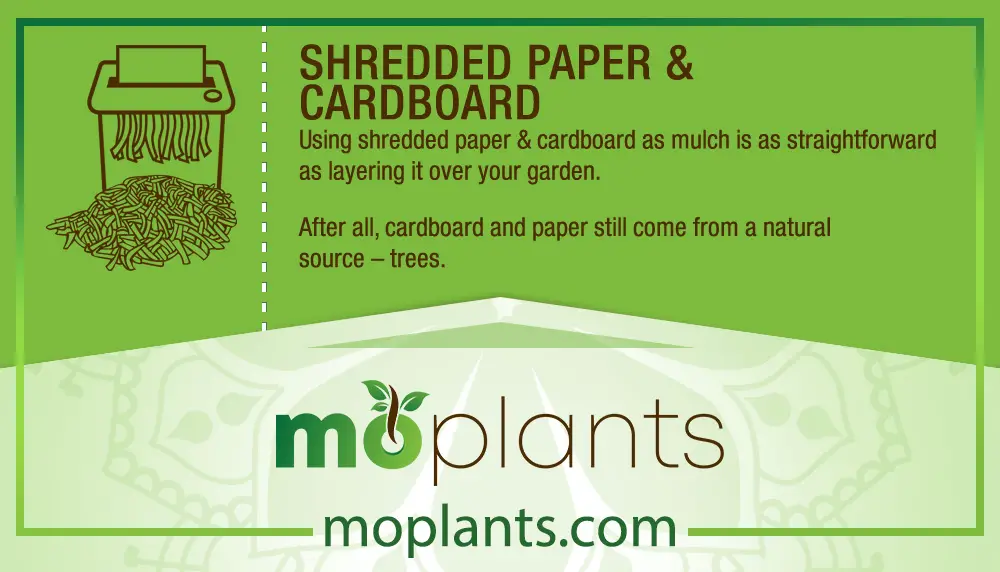
Infographic
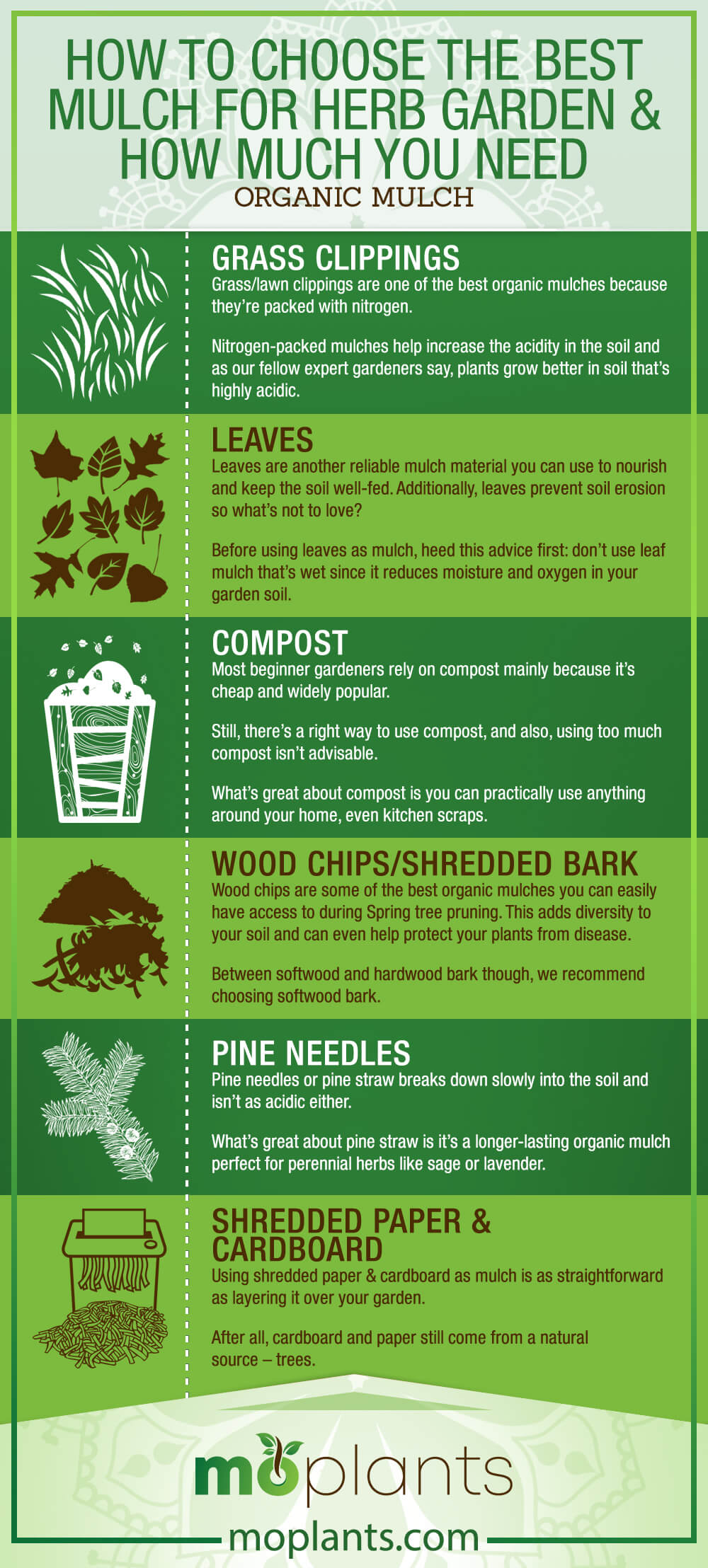
Inorganic Mulch
Black Plastic
Black plastic is a convenient inorganic mulch material you can use during early Spring to reduce water loss and even for short growing seasons.
However, be careful not to use plastic mulch during summer or in an area with hot climates since heat can easily break it down.
Polyester Fabric
Polyester or landscape fabric isn’t the best option for vegetable gardens and ideal for a flower garden or flower bed.
Similarly, you can use landscape fabric around shrubbery or trees to eliminate weeds in the area.
Advantages of using landscape fabric include preventing erosion, reduces moisture evaporation, can prevent organic mulches from breaking down, and eliminate weeds.
So if you want your garden to be weed-free, learn how to properly apply landscape fabric.
Crushed Stone, Gravel, & Brick Chips
Crushed stone and gravel may be a tempting option to eliminate weeds in your garden; however, it also makes cultivation difficult.
Not to mention, it’s hard to move around heavy pieces of gravel or crushed stone around the area. Let alone, expensive to procure.
Ultimately, we don’t recommend using large quantities of it.
How to Choose the Best Mulch for Your Vegetable Garden
With all the information you have now about organic and inorganic mulches, you’re ready to dive into the second most important part: choosing the best mulch.
Weather/Season
Gardening 101: The weather and season play a crucial role in your herbs or plants’ health. That is, if you want a lush garden for several years, you’ll need these gardening tips.
During Summer, using inorganic mulches like plastic mulch is a bad idea. A high soil temperature can burn up organic matter faster and cause stress to your plants & herbs. In this case, we recommend using soil cooling mulch like straw or leaves.
However, in areas where the soil is wet during summer, dry out the straw and leaves first before you place them onto your garden.
During Winter, apply mulch or organic matter around the base of any new perennial plant. Shredded leaves, grass clippings, wood chips, and straw are all excellent options.
Make sure to apply at least 3 to 4 inches thick of mulch.
Mulching in Spring is a different story. After all the hard frost has come to pass, your plants and herbs can rest easy.
However, check if you notice any weeds or debris lying around. In times like these, using a permeable landscape fabric or cardboard can work wonders based on our experience.
Note: place your cardboard or permeable fabric on the ground before adding organic mulch.
As for Autumn, you only need to add some or small quantities of mulch.
There is an exception to this, though. If you have a bare, unplanted garden bed or didn’t plant a winter cover crop, you have to apply a thick layer of compost over the soil surface at least 4 inches deep.
Plant/Herb Type
Not all plants require the same growing conditions. Depending on the type of plant you want to grow in your garden, the type of mulch also matters.
Heat-loving plants like tomatoes, melons, peppers, and eggplants go well with black plastic mulch.
Cool-loving plants like broccoli, leafy greens, basil, parsley, and cilantro go well with leaves, newspaper, grass/lawn clippings, compost, and straw.
If you plant mint, sage, lavender, or thyme, shredded bark and wood chips work better in general.
How to Apply Mulch & How Much Is Needed?
To properly apply mulch, here are some tips to remember:
- Keep mulch at least 1 inch away from the plant stem
- Apply nitrogen-rich fertilizer below your mulch
- For organic mulch, a 2 to 3-inch layer is a good standard to follow, except for winter which may need an additional inch layer
- If your leaves have chemicals or phenols in them, they should be aged for at least 9 months before using them
- If you notice your mulch is faded, use a garden fork or rake to fluff it up
- For woody or bark mulch, make sure to water it evenly to prevent fungus
- Remember to water the soil around your herb and not over the leaves
Conclusion
Before you go, make sure to use the right landscaping tools for your vegetable garden or environment. Checking the soil moisture before adding mulch is also crucial.
High-moisture soils don’t go well with thick, moisture-retentive mulch. Furthermore, don’t be afraid to experiment with your compost bin.
Some even use compost tea from time to time! Happy gardening! Don’t forget to water your plants!

